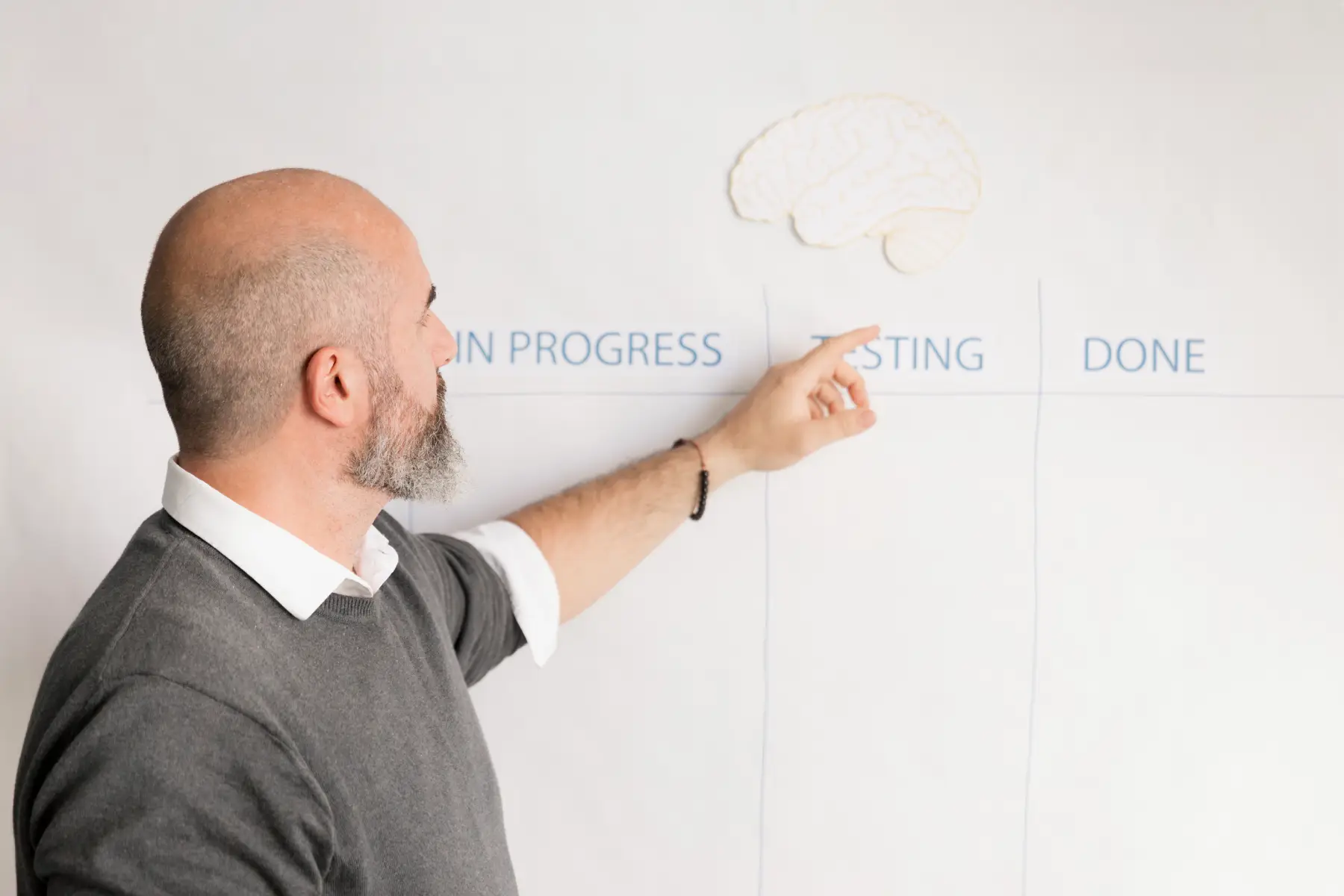Strengthening the Foundations of Effective Leadership and Organisational Success
Introduction
In the fast-paced, complex environment of modern business, decision-making has become a cornerstone of leadership success. Every decision, whether strategic or operational, carries significant consequences for organisations, teams, and individuals. To consistently make sound decisions, professionals must rely on critical thinking—a skill that enables them to analyse information, question assumptions, and evaluate outcomes logically.
Critical thinking does not just focus on arriving at an answer—it involves a rigorous process of reflection, exploration, and analysis. This whitepaper explores the integral role of critical thinking in effective decision-making, provides practical techniques for enhancing this skill, and offers real-world examples where strong critical thinking underpinned successful decision-making. By honing these abilities, business professionals can navigate uncertainty, solve problems efficiently, and lead with confidence.
The Role of Critical Thinking in Decision-Making
At its core, decision-making is the process of choosing between alternatives to achieve desired outcomes. However, in business settings, decisions are rarely straightforward. They often involve:
– Ambiguity, where information may be incomplete or contradictory.
– High stakes, where outcomes impact profits, employee satisfaction, or future opportunities.
– Ripple effects, where decisions influence multiple individuals or departments.
Critical thinking equips professionals to approach these challenges systematically, ensuring decisions are well-informed, balanced, and aligned with broader goals.
-
Structuring the Decision-Making Process
Critical thinkers break down decision-making into structured steps, such as defining the problem, analysing potential options, weighing risks, and considering consequences. This approach reduces cognitive biases and reactive instincts, replacing emotion-driven decisions with logic-based evaluations.
– Example: Instead of jumping to conclusions during a budget crisis, critical thinkers systematically examine spending data, identify trends, and evaluate which cuts would have the least operational impact.
-
Mitigating Cognitive Biases
Cognitive biases such as confirmation bias, overconfidence, or groupthink can distort judgement, leading to suboptimal decisions. Critical thinking requires individuals to actively question their assumptions, seek diverse perspectives, and evaluate evidence objectively.
– Example: A manager hiring a new employee may challenge initial impressions by reviewing measurable performance metrics and conducting panel interviews to avoid bias.
-
Supporting Innovation and Problem-Solving
Critical thinking fosters creative problem-solving by encouraging professionals to think beyond surface-level solutions. It enables them to identify the root cause of challenges and explore innovative approaches that address issues holistically.
– Example: A team faced with declining sales may uncover customer dissatisfaction by critically analysing feedback instead of assuming market conditions are to blame.
By embedding critical thinking into decision-making processes, leaders reduce the likelihood of errors while creating a foundation for long-term success.
Techniques for Enhancing Critical Thinking
Developing critical thinking skills requires deliberate practice and the use of structured techniques. Below are some proven approaches to strengthen this essential skill:
-
Problem-Solving Frameworks
Frameworks provide structured methodologies for analysing problems and making logical decisions.
– The Decision Matrix: This tool helps professionals evaluate alternatives based on pre-defined criteria, scoring and prioritising each option for a clear comparison.
– Example: When evaluating potential vendors, a finance manager uses a decision matrix to score options based on cost, reliability, and service quality.
– The Five Whys Method: This technique explores the root cause of a problem by asking “Why?” iteratively.
– Example: A sudden drop in production output is traced to misaligned equipment, highlighting the importance of regular maintenance scheduling.
– SWOT Analysis (Strengths, Weaknesses, Opportunities, Threats): This framework helps individuals or teams assess both internal and external factors influencing a decision.
These frameworks encourage organised thinking, reducing the risk of overlooking critical factors in decision-making.
-
Reflective Practices
Reflection helps professionals pause and evaluate their thought processes, uncovering potential blind spots or biases.
– Journaling: Keeping a decision-making journal encourages reflection on past decisions—what worked, what did not, and how the process can improve in the future.
– Example: An executive reflects on a failed marketing campaign, identifying the flawed assumptions about the target audience and applying this insight to future campaigns.
– Post-Mortem Analysis: After a decision has been made, teams can conduct a post-mortem to evaluate its outcomes. By identifying lessons learned, professionals refine future decision-making practices.
– Mindful Decision-Making: Incorporating mindfulness techniques, such as pausing to evaluate emotional responses, can help leaders remain focused and objective under pressure.
Reflective practices transform decision-making into a continuous learning process, fostering durable improvement.
-
Seeking Diverse Perspectives
Diverse perspectives provide new insights that challenge assumptions and enrich problem-solving. Leaders should actively seek input from individuals with varied expertise or experiences, widening the ideas pool and reducing groupthink.
– Cross-Functional Collaboration: Cross-departmental teams introduce fresh viewpoints and promote creative thinking. For instance, involving marketing, finance, and product teams can reveal how a decision may impact all stakeholders.
– Devil’s Advocacy: Assigning someone the role of devil’s advocate in meetings ensures alternative viewpoints are explored, even when the team leans towards a particular option.
Professionals uncover opportunities and risks that may otherwise go unnoticed by broadening the decision-making lens.
-
Scenario Planning
Scenario planning equips professionals to anticipate potential outcomes based on different assumptions or circumstances.
– Building What-If Scenarios: Teams generate possible best-case and worst-case scenarios based on existing trends or uncertainties.
– Example: A company deploying new technology models various customer adoption rates and adjusts strategies based on probable scenarios.
– Contingency Planning: Professionals explore backup plans for high-risk decisions, ensuring resilience in unexpected events.
Scenario planning equips leaders with the foresight to navigate ambiguity with confidence.
Case Studies in Decision-Making
Case Study 1: Strategic Product Launch
Challenge: A consumer electronics company sought to launch a new product but faced uncertainty about its reception.
Action:
– The team applied SWOT analysis to balance strengths (brand reputation) with threats (market saturation).
– Scenario planning explored potential outcomes based on price points and competitor responses.
– Open collaboration yielded insights from marketing, supply chain, and sales teams.
Result: By making decisions based on critical analysis, the company successfully launched the product and achieved a 15% market share within six months.
Case Study 2: Crisis Management
Challenge: A business encountered a sudden data breach, risking reputational damage and operational disruption.
Action:
– Leadership framed the issue using the Five Whys method to identify the root cause—unsecured access points within the IT infrastructure.
– The team developed an immediate action plan to notify stakeholders, mitigate data leaks, and rebuild trust.
– Reflective practices (a post-mortem analysis) helped identify long-term preventive measures.
Result: Crisis containment and transparent communication minimised reputational damage, and trust was restored with stakeholders.
Case Study 3: Expanding Market Presence
Challenge: A retail chain planned to expand internationally but was uncertain about which market to prioritise.
Action:
– Decision matrices were employed to weigh potential countries, using criteria such as customer demand, regulatory environment, and operational cost.
– The team engaged diverse perspectives through regional focus groups.
Result: The business selected a high-growth market, increasing revenue by 20% within one year of expansion.
These cases demonstrate how critical thinking amplifies decision-making effectiveness, fostering resilience and driving long-term results.
Conclusion
Critical thinking and decision-making are inseparable skills that underpin effective leadership and organisational performance. By embedding structured problem-solving frameworks, reflective practices, and scenario planning into their processes, professionals can overcome uncertainty, minimise risk, and make well-informed, strategic choices.
Developing critical thinking is not just an individual endeavour—it is a collective asset that strengthens teams, promotes collaboration, and fosters an adaptable, innovative culture. For business professionals, continuous investment in building these skills leads to better decisions, stronger outcomes, and heightened personal and professional success.








